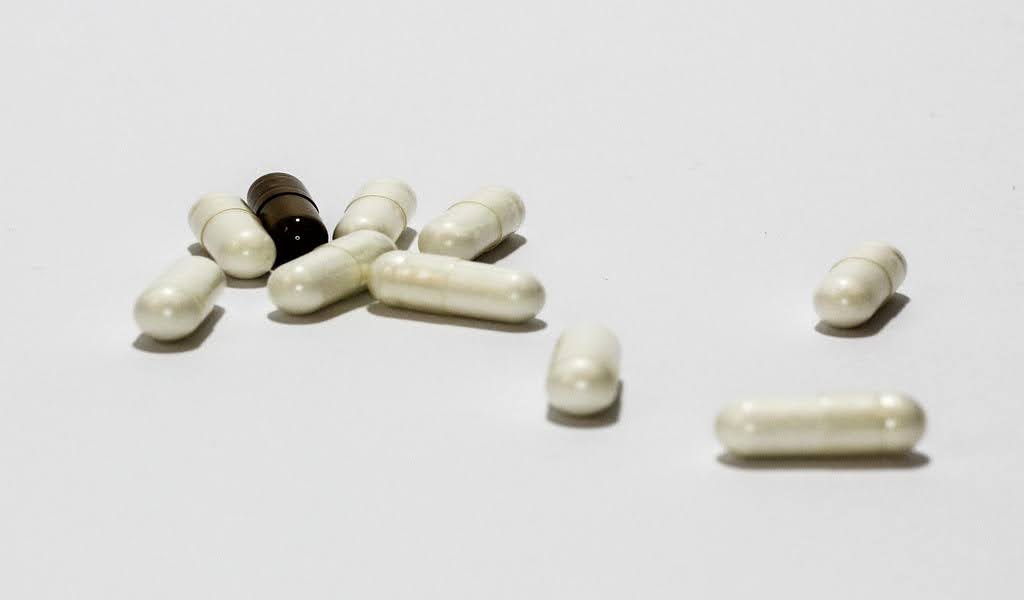Nebulizers vs. Inhalers: How Do They Compare?
Key takeawaysUnderstand the core differences between nebulizers and inhalers for respiratory treatmentLearn the advantages and disadvantages of each device for various health [...]
Read More
Medically reviewed by Alan Lucks | MD, Alan Lucks MDPC Private Practice - New York on June 16th, 2025.
Tramadol is a prescription medication commonly used to manage moderate to moderately severe pain. It belongs to a class of drugs known as opioids, which work by altering the way the brain and nervous system respond to pain.
 However, with various formulations and appearances of tramadol pills, it can be challenging to identify the specific type you have. This article aims to provide comprehensive guidance on how to identify tramadol pills, including their physical characteristics, dosage forms, and important considerations for safe use. For tailored advice that may be better suited to your specific situation, consult Doctronic.ai, your AI doctor-powered health assistant supported by real medical experts.
However, with various formulations and appearances of tramadol pills, it can be challenging to identify the specific type you have. This article aims to provide comprehensive guidance on how to identify tramadol pills, including their physical characteristics, dosage forms, and important considerations for safe use. For tailored advice that may be better suited to your specific situation, consult Doctronic.ai, your AI doctor-powered health assistant supported by real medical experts.
Before diving into identification methods, it is essential to understand what tramadol is and how it functions. Tramadol is not only an opioid but also has some properties of antidepressants, which can enhance its pain-relieving effects. It is often prescribed for conditions such as chronic pain, post-surgical pain, and pain associated with certain medical conditions. The medication is classified as a Schedule IV controlled substance, indicating that while it has therapeutic benefits, there is a potential for misuse and dependence. This classification underscores the importance of using tramadol under the guidance of a qualified healthcare provider.
Tramadol works by binding to the brain's opioid receptors, which helps to reduce the perception of pain.
Additionally, it inhibits the reuptake of neurotransmitters like serotonin and norepinephrine, contributing to its analgesic effects. This dual action makes tramadol a unique option for pain management. The interaction with serotonin pathways is particularly noteworthy, as it can also contribute to mood elevation, which may be beneficial for patients dealing with chronic pain that often accompanies depressive symptoms. Understanding this mechanism can help patients and providers make informed decisions about pain management strategies.
This medication is typically prescribed for various types of pain, including:
Chronic pain conditions
Post-operative pain
Neuropathic pain
It is important to note that tramadol may not be suitable for everyone, and its use should be closely monitored by a healthcare professional. In particular, individuals with a history of substance abuse, certain psychiatric conditions, or those taking medications that may interact with tramadol should exercise caution.
Furthermore, tramadol is often considered when other pain management options have proven ineffective, making it a valuable tool in a comprehensive pain management plan. Patients should also be aware of potential side effects, which can include dizziness, nausea, and constipation, and communicate any concerns with their healthcare provider to ensure safe and effective use of the medication.
 Identifying tramadol pills involves examining their physical characteristics, which can vary based on the manufacturer, dosage, and formulation. Here are some key features to consider:
Identifying tramadol pills involves examining their physical characteristics, which can vary based on the manufacturer, dosage, and formulation. Here are some key features to consider:
Tramadol pills come in various colors and shapes, including:
White
Yellow
Blue
Round
Oval
For example, tramadol 50 mg tablets are often round and white, while higher doses may be oval or capsule-shaped. The color and shape can provide important clues in identifying the pill.
Additionally, some formulations may be coated to enhance swallowing or to control the release of the medication over time, which can also affect their appearance. Understanding these variations is crucial for patients to ensure they are taking the correct medication, especially when switching between different brands or dosages.
Every prescription medication is required to have an imprint code, which is a unique identifier for that specific drug. This code can include letters, numbers, or both. For tramadol, common imprint codes include:
UL 50
Dosage: 50 mg
Color: White
Shape: Round
UL 100
Dosage: 100 mg
Color: Yellow
Shape: Round
UL 200
Dosage: 200 mg
Color: Blue
Shape: Oval
Using these imprint codes, individuals can verify the identity of their tramadol pills through online databases or by consulting a pharmacist. This verification process is essential not only for ensuring the correct medication is being taken but also for avoiding potential medication errors that could arise from misidentification.
Furthermore, some individuals may encounter counterfeit medications, making it even more critical to rely on these unique identifiers to confirm authenticity.
In addition to color, shape, and imprint codes, the texture of tramadol pills can also play a role in identification. Some formulations may have a smooth finish, while others might be scored or have a rougher texture. Scoring can indicate that a pill is intended to be split, allowing for more flexible dosing options. Patients should be aware of these details, as they can further aid in distinguishing between different medications and ensure proper usage according to their healthcare provider's instructions. Always consult a healthcare professional if there are any uncertainties regarding the medication being taken.
Tramadol is available in several formulations, each designed for specific patient needs. Understanding these formulations can help you identify your medication.
Tramadol is available in both immediate-release and extended-release formulations. Immediate-release tablets are typically used for acute pain management, while extended-release formulations are intended for chronic pain relief.
Immediate-release tramadol usually comes in lower dosages and is taken multiple times a day. In contrast, extended-release versions are taken once daily and provide a more consistent level of pain control. This distinction is crucial for patients who may experience fluctuating pain levels, as the extended-release formulation can help maintain a stable therapeutic effect throughout the day without the need for frequent dosing.
Some tramadol formulations are combined with other medications, such as acetaminophen. These combination products can enhance pain relief but require careful identification to ensure proper use. For example, tramadol with acetaminophen may have a different appearance and dosage compared to tramadol alone.
Additionally, the combination of tramadol with other analgesics can be particularly beneficial for patients who have not found sufficient relief with a single agent. This synergistic effect can lead to improved pain management while minimizing the side effects associated with higher doses of a single medication.
However, patients must consult with their healthcare provider to determine the most appropriate formulation and to understand the potential interactions and contraindications associated with each combination product. Here at Doctronic.ai, we'll explain it in a way that makes sense to you.
 While tramadol can be effective for pain management, it is crucial to use it safely and responsibly. Here are some important safety considerations:
While tramadol can be effective for pain management, it is crucial to use it safely and responsibly. Here are some important safety considerations:
Like all medications, tramadol can cause side effects. Common side effects include:
Nausea
Dizziness
Constipation
Headache
In some cases, tramadol can lead to more severe side effects, such as respiratory depression or seizures, especially when taken in high doses or combined with other central nervous system depressants. It is important for patients to monitor their reactions to the medication closely and report any unusual symptoms to their healthcare provider promptly.
Additionally, some individuals may experience allergic reactions, which can manifest as rashes, itching, or swelling, particularly of the face, tongue, or throat. If any signs of an allergic reaction occur, immediate medical attention should be sought.
Tramadol is classified as a controlled substance due to its potential for abuse and dependence. Patients should be aware of the risks and use tramadol only as prescribed. It is essential to communicate openly with healthcare providers about any history of substance use disorders.
Furthermore, those using tramadol should be cautious about sharing their medication with others, as misuse can lead to serious health complications. Regular follow-ups with a healthcare professional can help ensure that the medication remains effective while minimizing the risk of dependence. Patients should also be educated on the signs of withdrawal, which may include anxiety, agitation, and flu-like symptoms, should they need to discontinue use.
To accurately identify your tramadol pills, follow these steps:
Start by closely examining the pill's color, shape, and size. Take note of any distinguishing features, such as coating or texture. For instance, tramadol pills can come in various colors including white, yellow, or blue, and they may be round, oval, or capsule-shaped. Understanding these characteristics can help in differentiating tramadol from other medications, especially in cases where multiple prescriptions are involved.
Look for the imprint code on the pill. This code is typically found on one side and can be used to verify the medication's identity through various online resources or by consulting a pharmacist. Each tramadol pill has a unique imprint that corresponds to its manufacturer and dosage, which can be crucial in ensuring you are taking the correct medication. If the imprint is unclear or worn, it’s advisable to seek professional assistance to avoid any potential mix-ups.
Utilize official resources such as the National Library of Medicine's Pillbox or other reputable drug identification websites. These platforms allow users to input the pill's physical characteristics and imprint code to find accurate information.
Additionally, many pharmacies offer mobile apps that can scan pills and provide instant identification, making it easier than ever to verify medications on the go. Always ensure that the resources you are using are up-to-date and reliable, as medication formulations can change over time.
Furthermore, it's important to be aware of the potential for counterfeit medications. In recent years, the rise of online pharmacies has made it easier for individuals to obtain medications, but it has also increased the risk of receiving fake or substandard products. Always purchase tramadol and other medications from licensed pharmacies, and if you suspect that your pills may not be legitimate, do not hesitate to reach out to a healthcare professional for guidance. Your safety and health should always be the top priority when managing prescriptions.
Identifying tramadol pills is essential for ensuring safe use, but there may be instances when it is necessary to seek professional help. Here are some scenarios to consider:
If there is any uncertainty about the identity of a tramadol pill, it is crucial to consult a healthcare provider or pharmacist. Taking an unknown medication can pose serious health risks. In addition to the potential for harmful side effects, there is also the risk of drug interactions that could exacerbate existing health conditions or lead to dangerous complications. Pharmacists are trained to identify medications and can provide guidance on the appropriate use of tramadol, including dosage and potential interactions with other medications you may be taking.
If side effects occur after taking tramadol, it is important to seek medical advice. Some side effects may require immediate attention, especially if they are severe or unusual. Common side effects may include dizziness, nausea, or constipation, but more serious reactions, such as difficulty breathing or severe allergic reactions, necessitate urgent care. It is also beneficial to keep a record of any side effects experienced, as this information can assist healthcare providers in determining the best course of action.
Furthermore, understanding the potential side effects can empower patients to make informed decisions about their medication and overall health management.
Proper storage and disposal of tramadol are vital to prevent misuse and ensure safety. Here are some guidelines:
Tramadol should be stored in a cool, dry place away from direct sunlight. It is essential to keep the medication out of reach of children and pets to prevent accidental ingestion.
When it comes to disposing of unused or expired tramadol, follow these recommendations:
Take-back programs: Many communities offer drug take-back programs for safe disposal.
Disposal in household trash: If no take-back options are available, mix the medication with an undesirable substance (like used coffee grounds) and place it in a sealed bag before throwing it away.
Flushing: Only flush tramadol down the toilet if the label or patient information specifically instructs it.
Identifying tramadol pills is crucial for ensuring the safe and effective use of this medication. By understanding the physical characteristics, formulations, and safety considerations, individuals can better navigate their pain management options. Always consult a healthcare professional if you have any doubts or concerns regarding tramadol or any other medication.
Take charge of your health by understanding tramadol pills—know their uses, risks, and safe practices. Empower yourself with the help of Doctronic to make informed decisions for pain management. Your well-being starts with awareness and responsible choices!
Key takeawaysUnderstand the core differences between nebulizers and inhalers for respiratory treatmentLearn the advantages and disadvantages of each device for various health [...]
Read MoreKey takeawaysRed light therapy is being explored as a treatment to reduce cold sore symptoms and speed healing.Scientific evidence shows promising but limited results; it may [...]
Read MoreKey takeawaysBoth COPD and asthma affect breathing, but have different causes and treatment approaches.COPD is usually linked to long-term exposure to irritants like smoking, [...]
Read More